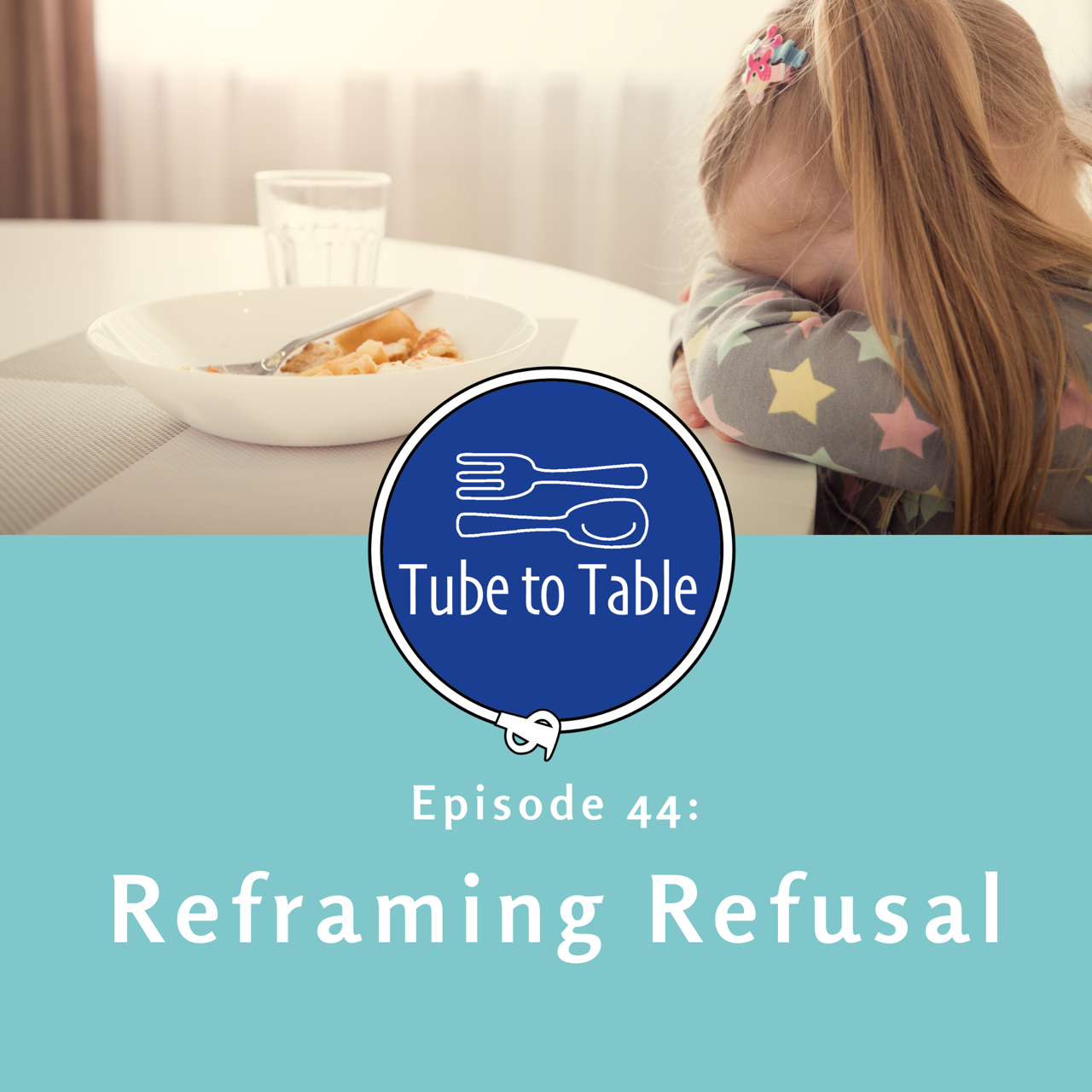Tube to Table Podcast: Episode 44: Reframing Refusal
June 11, 2020
Posted in: Early Intervention, Feeding, Tube To Table Podcast
Welcome back to the Tube to Table Podcast. On this week’s episode, Reframing Refusal, Heidi and Jennifer are talking about how to reframe the experience you and your child have when they refuse to eat. We are so thankful for all of our listeners and have loved hearing how this podcast is helping therapists and families implement responsive feeding into their mealtimes! With the summer approaching, we are planning to take some time off to record some new episodes and will be back with Season 2 in a couple months! For today’s episode, your hosts will dive into what refusal looks like and how to handle it when it happens before, during, or after the intensive weaning process. Refusal is a natural and necessary part of development and how your child learns to have a happy and healthy relationship with food. What do you do when your child refuses to eat? Why does refusal happen and what does it mean? All of these questions will be answered in this week’s episode!
You can download this episode from Itunes, Stitcher, Spotify, Google Play, or listen to it below:
Refusal is often referred to within feeding therapy or mealtimes as a bad thing, but refusal is very appropriate and a necessary stage of development. This is the time when children learn to trust their caregivers and know that when they refuse, they will not be forced or pressured to eat. When they feel that trust build, they tend to be more comfortable around mealtimes. There are many reasons why a child may refuse. Initially, this may be safety. A child who has had difficulties with aspiration or breathing, may refuse food because it is not safe or it is scary. This could be developmentally appropriate, a way for them to build autonomy and independence, and help them to learn their opinion around food and mealtimes. Especially at the toddler stage, when children are learning they are not just an extension of their parent, but their own person.
Leading up to the wean and during the preparation phase, our program focuses on introducing responsive mealtimes and building trust during eating opportunities. For tube-fed kids, we expect refusal during this time. When we look at a child’s self-regulation, we focus on their refusals while being fully tube-fed. This refusal is showing us that there is no reason or purpose for them to eat, and therefore it is appropriate for them to refuse food. It is actually a good sign when children refuse as this is an emerging sign of learning to listen to their body.
Throughout the intensive process, refusal does not just magically disappear. Even if a child is able to pick up on eating or is successful with transitioning to eating orally, it is important to keep in mind WHY refusals may show up. This can be difficult for parents if the refusing is inconsistent, but this is a natural part of any child learning about the understanding and comfort part of eating. It’s important to take a step back and look at WHY your child may be refusing. Learning to read your child’s cues and identify if they need space, time, or if there is something in the environment that can be changed. This will help parents and caregivers change the way they interact with their child during mealtimes and continue to remember that it is normal for refusal. If the focus remains on a responsive, child-directed environment that considers refusal as a normal part of the progress, this reduces the risk that there would be added stress or pressure to the environment. By reframing refusal, it will help your child and you get to a happy and healthy relationship with food!
We hope you enjoyed this first season of Tube to Table, we can’t wait to be back with more informative and exciting topics!

Be the first to comment